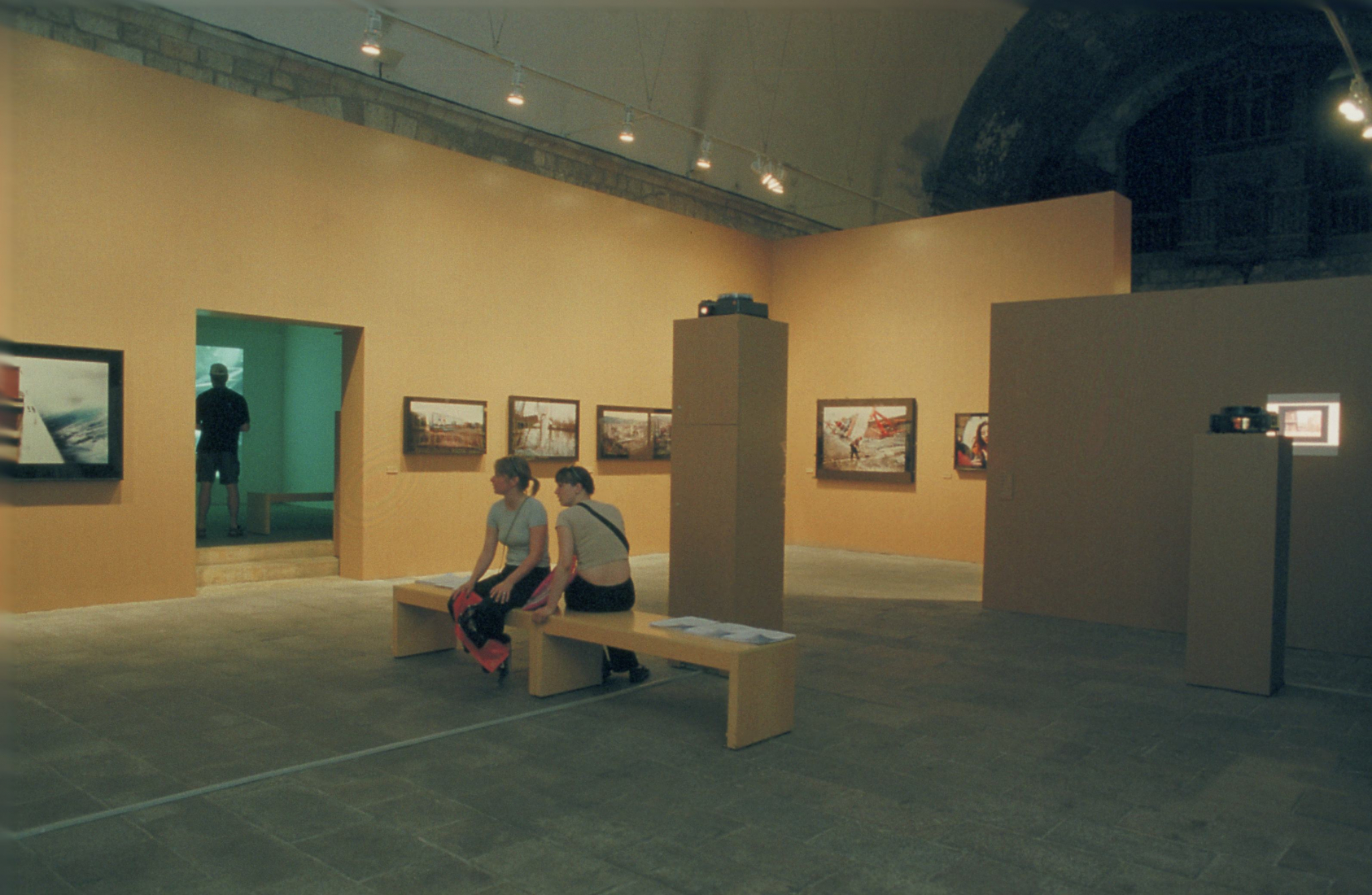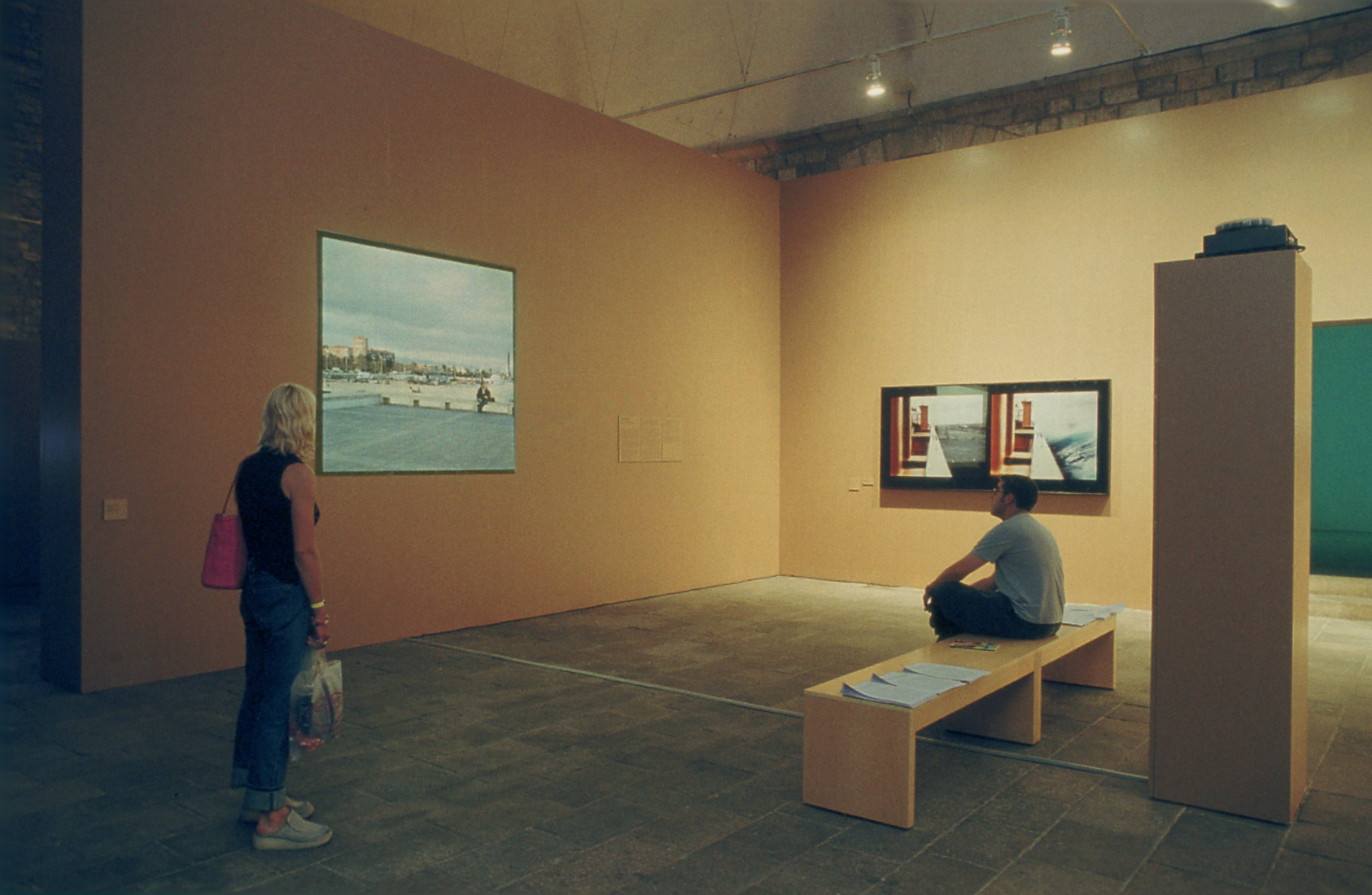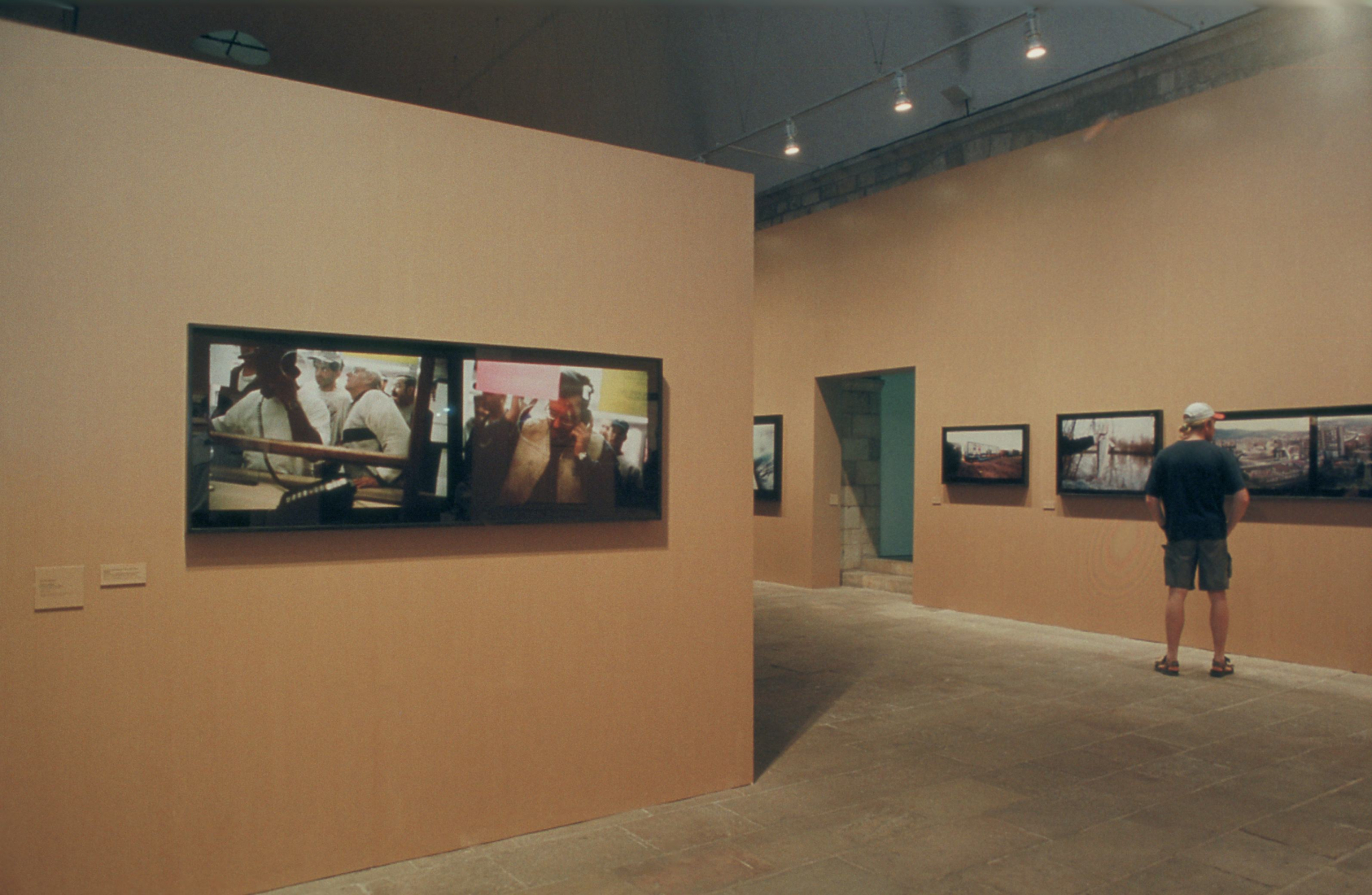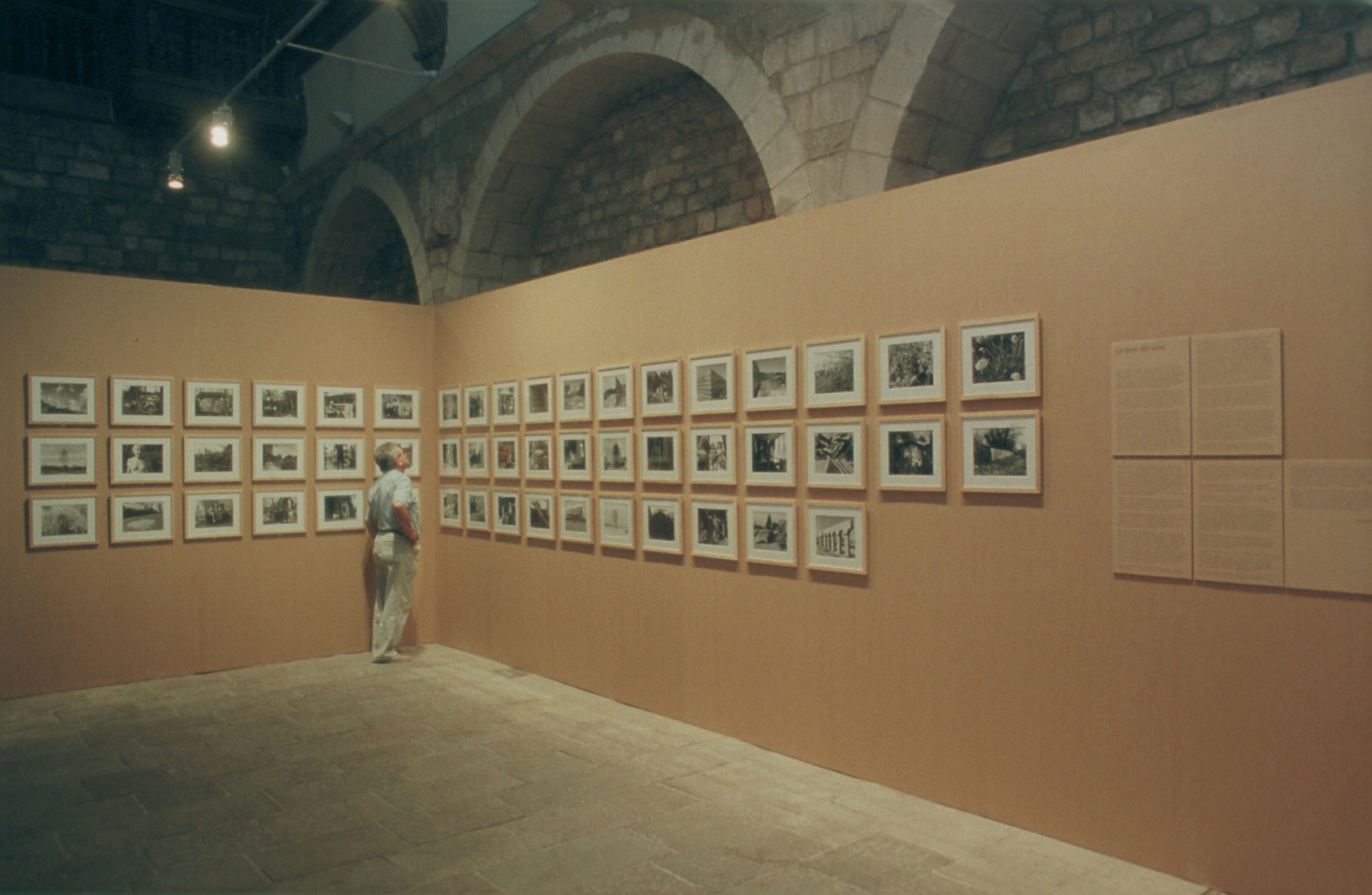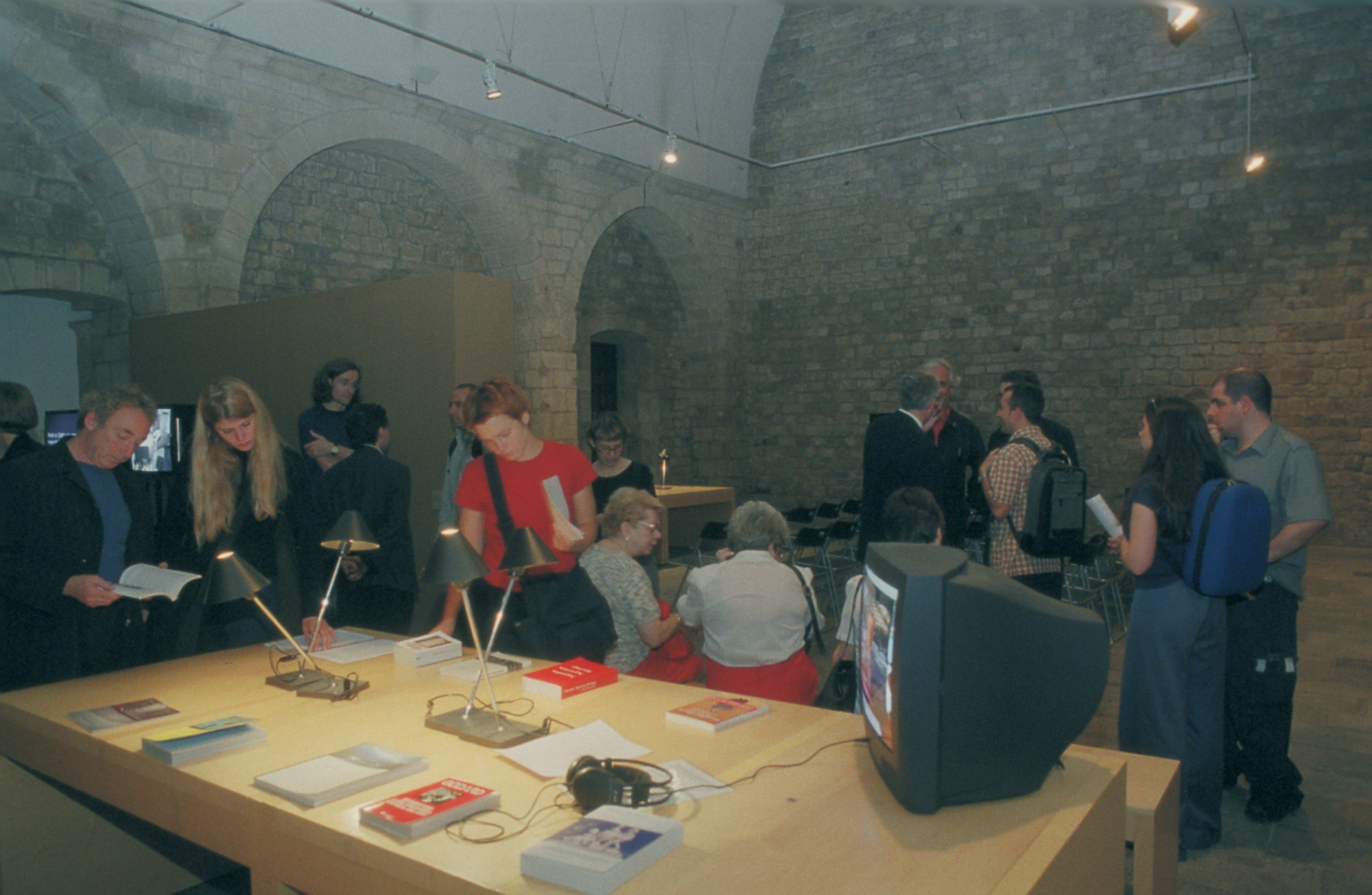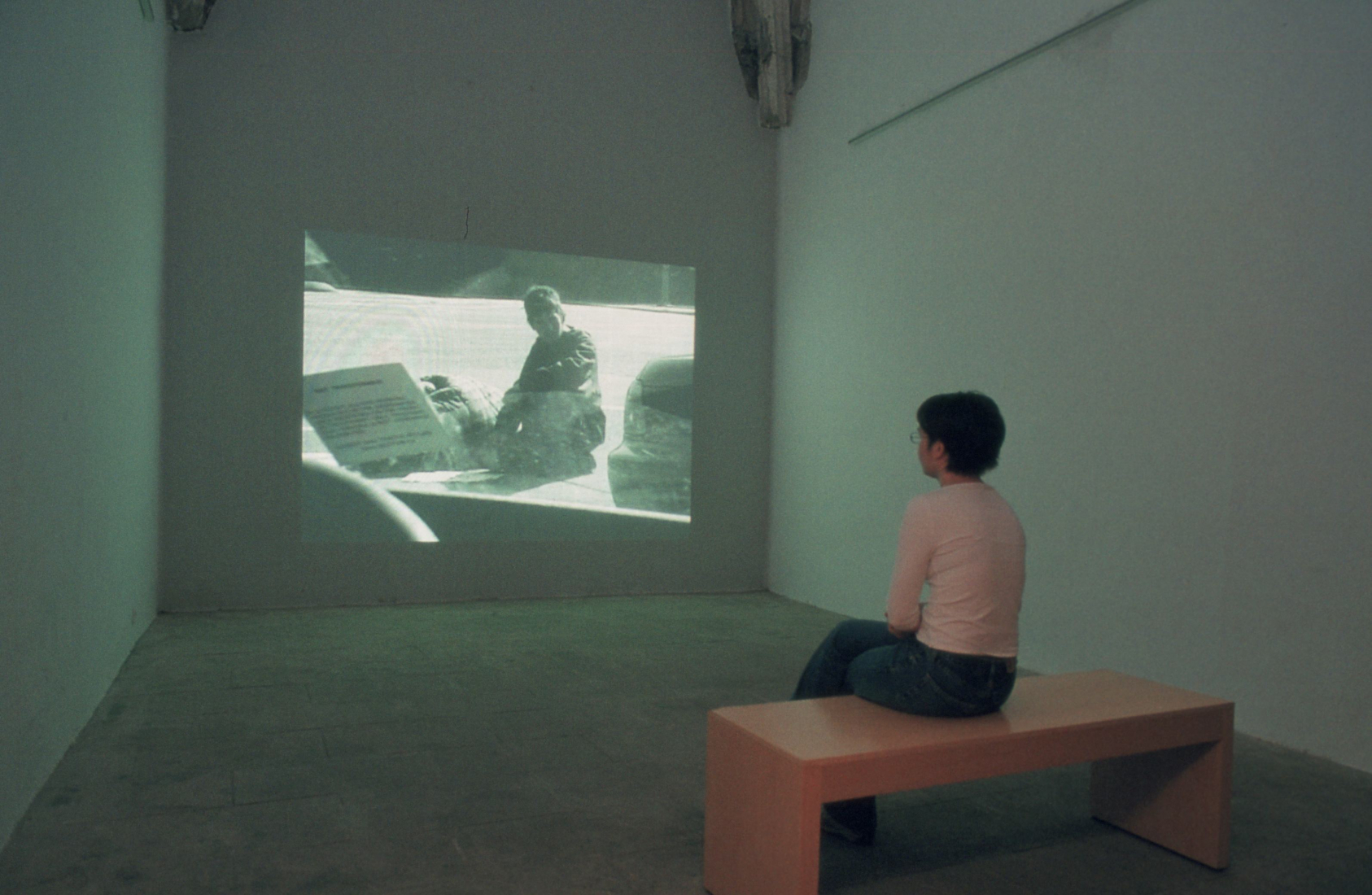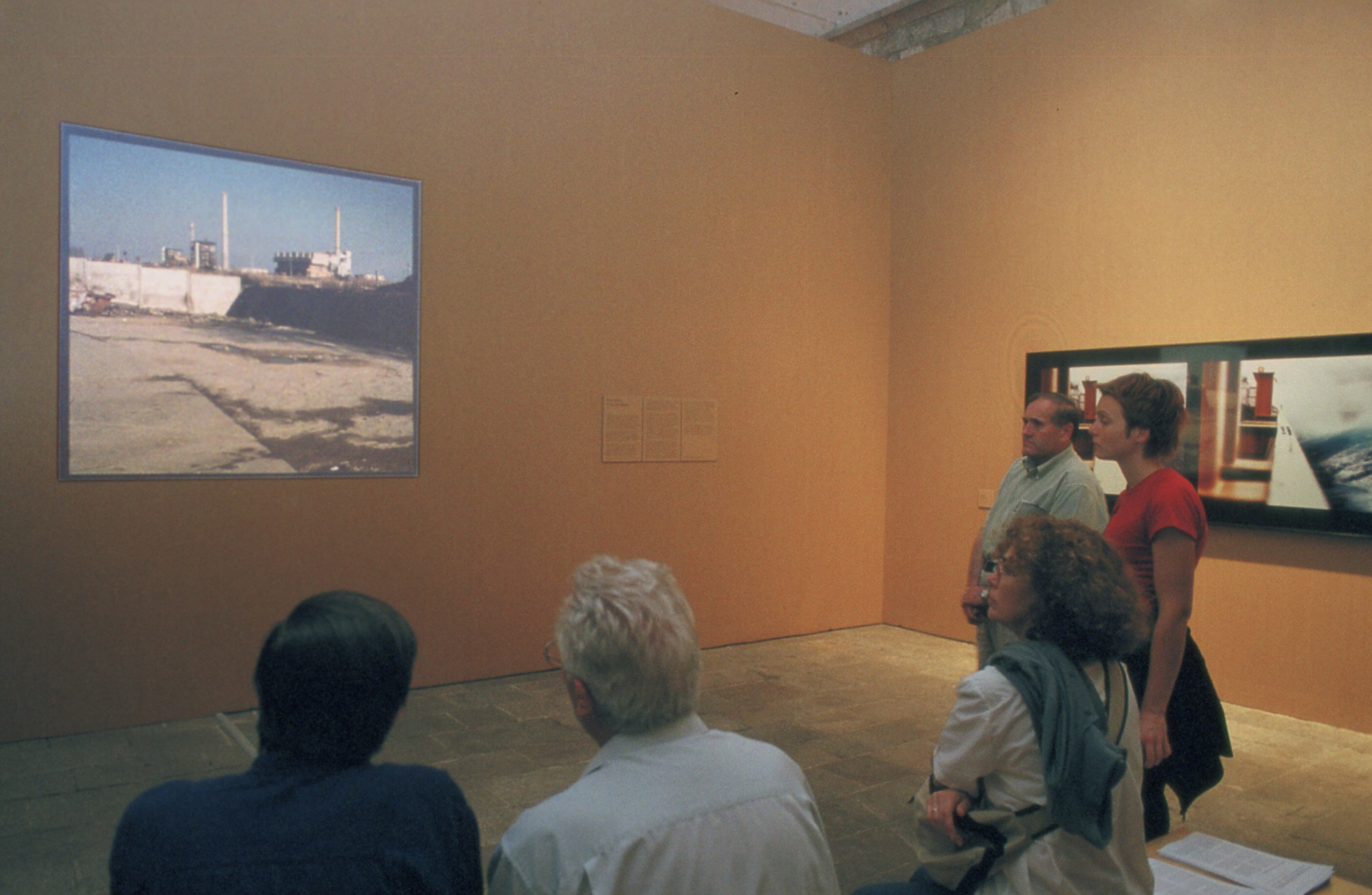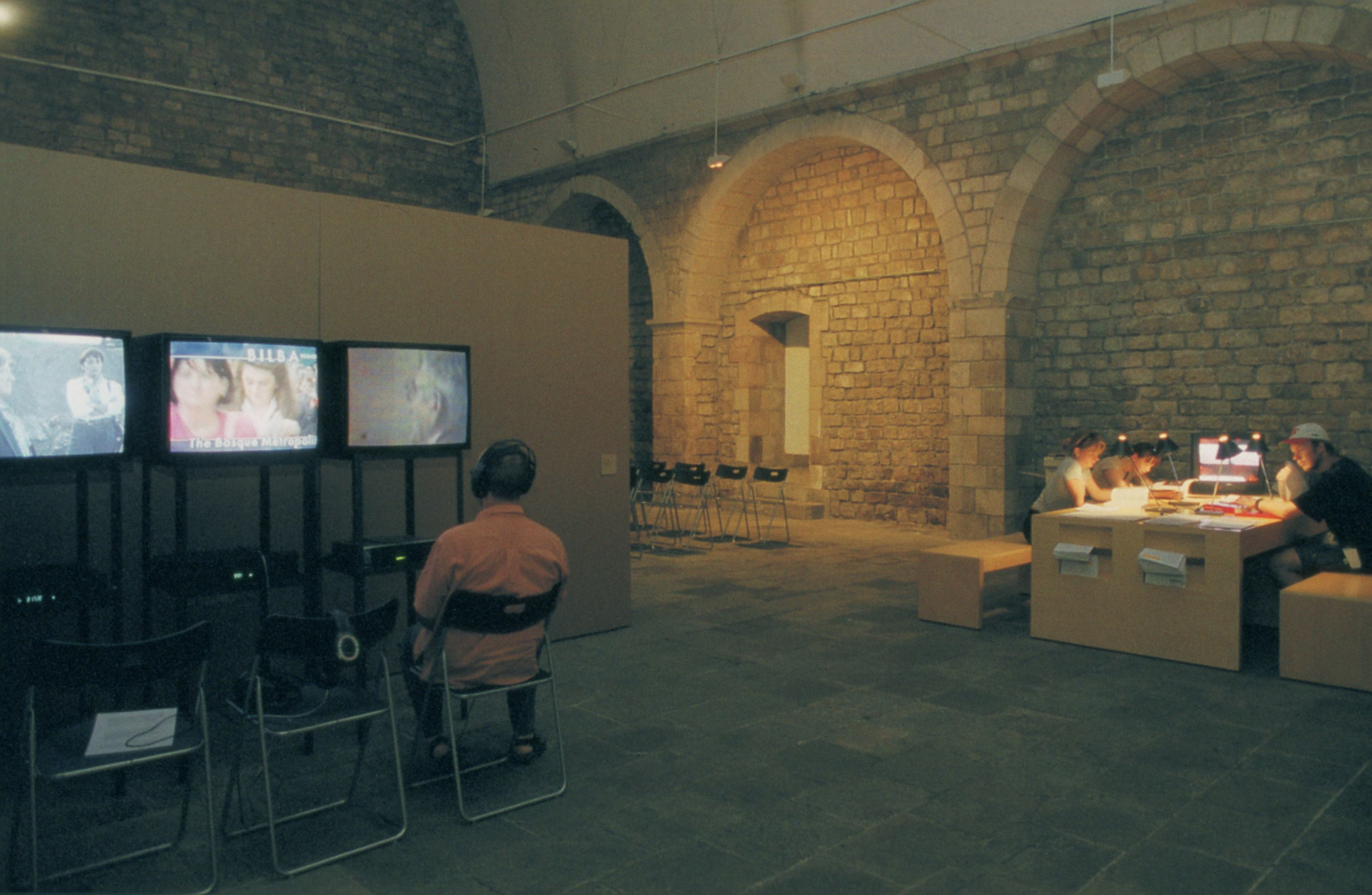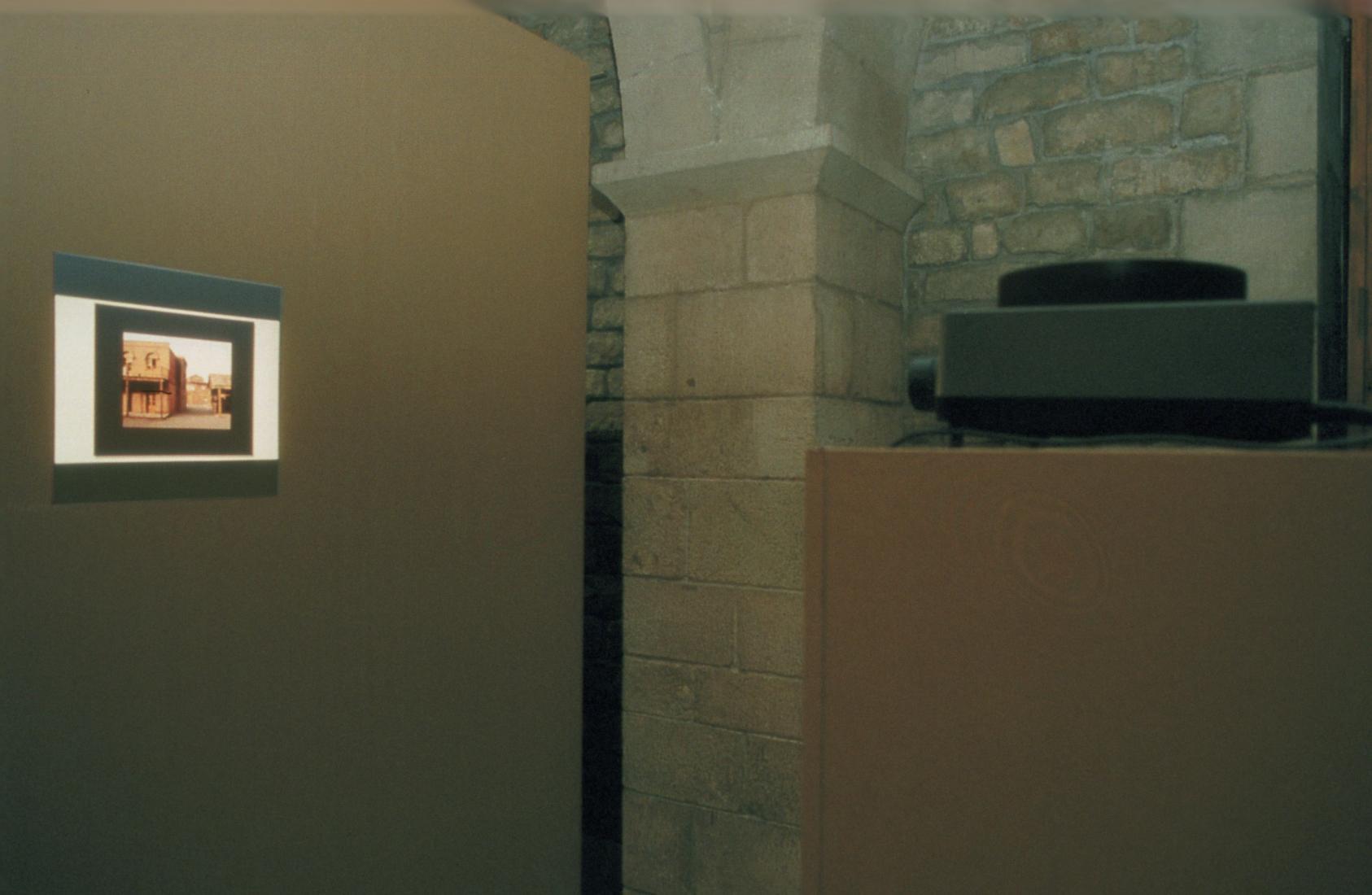Processos documentals. Imatge testimonial, subalternitat i esfera pública
Artists: Roy Arden, Úrsula Biemann, Marcelo Expósito, Patrick Faigenbaum, Joan Roca, Harun Farocki, Marc Pataut, Andrea Robins, Max Becher, Allan Sekula i Frederick Wiseman
The exhibition presents a selection of photographic and audio-visual works through which we can examine the changes in what is categorised as documentary based on its hybridisation with forms of narrative and mediation which come from the concept of testimonio. Testimonio is a narrative genre through which the voice of the subaltern classes is made accessible to the elites, by way of a mediator. As John Beverly points out “the problem of testimonio is in fact also one of representation and representativity” from which the possibility of a democratising alliance can take shape between intellectuality and the working classes, without subordinating the heterogeneity of the groups to representative demands. Testimonio arises from a context of crisis of representativity in the old political parties and is inseparable from the emergence of post-modern forms of constructing political identity through “new social movements”.
Right from its first appearance as a minor genre at the turn of the 20th Century with the works of Jacob Riis and Lewis Hine about the precarious working conditions of the sub-proletariat of urban New York, documentary photography has been closely connected to the political traditions of liberal reformism – that is to say it is a genre which is inseparable from political standpoints which are in favour of change and social progress in the subaltern classes. The development of the printed media quickly turned photography into the medium par excellence for social protest – taking over the reins from realist painting. This identification of photographic documentalism with realism began to be questioned, through critical anti-naturalism, by some writers from the 1960s onwards – initially by modern film-makers like Jean-Luc Godard, Chris Marker or Jean-Marie Straub and Danièlle Huillet, then later producing a progressive anti-illusionist annihilation of photographic realism based on the influence of linguistic studies, post-structuralism and critical works of representation by the generation of conceptual artists. Thus from that moment television took over photography’s role as the hegemonic medium of the representation of reality. That first epistemological transformation of image in the 1960s and 1970s put the documentary genre into a precarious position, in need of constant justification and contextualisation through a variety of combinations of text and imagery. This can, to an extent, perhaps be equated with that which is taking place today due to the impact of digital images and electronic media. The crisis for photography’s true aspirations reaches its peak with digital image production, through which that last remaining trust in photography’s privileged access to the real has disappeared.
In this context of crisis within the question of the representation of reality through photographic and audio-visual imagery, documentary has to find other strategies of resistance in order to legitimise some form of realism – of ‘representativity’ – and so preserve the potential for criticism and change of the image, which is a precondition of the genre. In this sense the notion of testimonio is essential, insofar as it brings with it a different work-process in which negotiation is established between subaltern and ruling cultural positions and creates a new relationship of collaboration between an author and social subjects. This process carries with it a transformation of the figure of the author and the author’s position and function. The collaborative dimension of the process clearly establishes an alliance, to a greater or lesser extent provisional, between the subjects who in this way are all on the same level, thus breaking the implicit hierarchy that exists in more pious and victim-creating forms of representation which are typical of the paternalist humanism of modern documentation (exemplified by W. Eugene Smith). So it is that with testimonio there appears a narrative dimension tied to oral tradition and the minor genre which looks at the small everyday stories. This is history which goes against the grain, subaltern, in direct opposition to the idea of the elites’ national-modern unique and universal history. If the criticism of representation questioned the realism of the image by showing its fictional nature and its implicit power-strategies, then here we can see the possibility of putting fiction back into the documentary discourse, taking on fully and from the first the whole discursive nature of all representation: “... documentary cinema, cinema which revolves around the ‘real’ can actually produce fictional invention which is more intense than ‘fiction’ cinema which is comfortably dedicated to a certain stereotyped representation of actions and characters ... the real has to be fictionalised before it can be thought about.” The realism of an image is once more possible when it incorporates its own criticism, that is when it is no longer a straight fact but rather an implicit and explicit result of a process which is as much aesthetic as it is political.
Some central ideas of this redefining of the document are therefore those which take a position of cultural resistance, a facet of the efficiency and use-value of an artistic work, and of the possibility of developing forms of interaction or negotiation between artists and diverse communities. So it is a question of understanding the document in a way that is more closely connected to the process, to the particular construction of sense in a specific context, than it is stylistic. That is to say, as a genre which is predefined and has already been afforded certain values and legitimacy (the highly influential “documentary style” of Walker Evans).
The works in the exhibition grew from a will to construct images in which the historical and geopolitical conditions that some subaltern groups are living in today become visible. It is obvious that economico-cultural globalisation and financial capitalism noticeably affect certain transformations in the cities and the public sphere, as can be seen, for example, in the growing privatisation of public services and the crisis in public policies on welfare, or in the speculative remodelling of urban areas, or in the new forms of exploitation and casual work, or in the way that the boom in the economy of the service industries and tourism has affected the way in which cities present their own history, supplanting any unique identifying features with a kind of mock history and homogenic non-differentiation. At such a moment it seems completely valid to try to keep a representative “realist” value for the image – one which can withstand the reduction of the real to a mere affectation and thus preserve the potential that images have for narrating the experience of historical process by actual, real people.
Cultural displacement is the theme of Ursula Biemann’s video-essay Performing the Border (1999). Filmed in Mexican border city Ciudad Juarez, where multinationals have built electronic and digital technology factories, just on the other side of El Paso, Texas, this video investigates the growing feminisation of the global economy starting with its impact on the women who live and work in this area. Seeing the border as much in its geographical as its discursive sense, the video explores – through different testimonies – the instability in the construction of gender-political identity in the border region (a metaphor for the crisis of the nation-state brought on by globalisation and the urban model of the sprawling city). This is seen through division of work, prostitution, the expression of female desires in the entertainment industry, and sexual violence in the public sphere. In this way it shows how old forms of exploitation continue to exist in the new economy.
The nucleus of Andrea Robbins’ and Max Becher’s work is the deterritorialization of the urban experience, and the disneyfication of public spaces. Their photographic series are constructed as specific analyses of situations in which a displacement between the cultural and the geographical has taken place. The series which are included in the exhibition refer to the impact that North American culture and its stereotypes has had inside and outside its territorial limits. Thus, Wall Street in Cuba (1993) is a record of the current situation of financial institution buildings constructed in Cuba during the North American occupation of the island of the first half of the Twentieth century: Old Tucson (1993) shows simulated reconstructions of the American West in a theme park in Arizona; German Indians (1994-95) shows how the identities of native Americans have been supplanted by a German community fascinated by the literary image of the American West, taken from the imagery of Karl May’s novels; Bavarian by Law (1995-96) shows the amazing effects of the transformation of a small American town by ‘Germanising’ its architecture and street signs, following typical examples of model trains, in order to bring in the tourists; New York, NY, Las Vegas, NV (1996), documents the construction of a hotel in Las Vegas which reproduces some of Manhattan’s most famous buildings.
The consequences of de-industrialisation and globalisation in the tertiarization of cities and in the collective memory of the working classes appear in the works of Marcelo Expósito, Harun Farocki and Allan Sekula. Marcelo Expósito’s video Octubre en el Norte: Temporal en el Noroeste (1995), combines the use of archive footage with present-day interviews and recordings. Made in Bilbao during the construction of the Guggenheim Museum, the video is constructed around a long interview with the director of the mining museum in Gallarta, which in the end begins to look like the counter-image of the spectral presence of the Guggenheim in the film – a symptom of the historical oblivion that Bilbao’s transformation represents for the working class – a transformation from what was a powerful industrial city into an impending mass-consumption tourist attraction. This unique building also appears – in a symptomatic way – in the series Titanic’s Wake (1998-2000) by Allen Sekula. Through the use of colour photographs and text, Sekula analyses global economy using dock workers as a starting point. Sekula has been one of the most important theoreticians of photography and documentary as a genre connected to minor traditions and thus seen as an alternative to photographic culture promoted through the art market system. This condition of minor genre, seems, therefore, to be in a particularly privileged position to observe and analyse, at a distance from elite culture’s grandiloquence. The series Titanic’s Wake refers to the recent phenomenon of the “return” of the sea, the symptoms of which would be films like Titanic or Waterworld or even the Guggenheim Museum itself with its aquatic wave-like forms. The work of Harun Farocki is also situated where the political, the economic and the aesthetic meet. His piece Workers Leaving the Factory (1995) makes a two-way reference, to the present of the working class and to its historical memory, in that it refers back to the historical origins of cinema – the Lumière brothers Sortie d’Usine. The film is constructed like a study of the Lumières’ film, which has obsessed generations of film-makers. The area in front of the factory has always been the scene of social conflicts.
Frederick Wiseman’s film Public Housing (1997) looks at daily life in a public housing complex in Chicago. The film shows situations connected to the work of the tenants’ association, life in the street, the rôle of the police, job creation schemes, anti-drug education, teenage mothers, dysfunctional families, the old, the programmes and activities of different American public administration bodies aiming to maintain and rebuild public buildings. Scenes show some of the experiences of people who live in conditions of extreme poverty.
Roy Arden is part of the Vancouver group of artists who, since the late 1970s, have played key parts in the redefinition of photography’s historical rôle in contemporary art culture, critically updating the Baudelairean programme of “painting modern life” and simultaneously bringing back the documentary tradition of Walker Evans and the photoconceptualism of Ed Ruscha, Dan Graham or Brend and Hilla Becher. His video-installation Citizen (2000) is a continuation of previous photographic works of his in which he looked at the representation of the inferior, by looking closely at residual objects, trash and abandoned junk, the leftovers from the lives of the homeless in the outskirts of Vancouver – in short, what we might call the ruins of modernity. Citizen is a short loop of a video recording shot by the artist himself from his car window, which shows a young homeless man sitting on a traffic island with cars all around him. The video image has been slightly slowed down and gives the impression of a pictorial presence of Baroque painting. Arden says of this work: “Among the very first subjects of photography you can find beggars or poor people. This work brings the theme into the present and into the digital video medium.”
Marc Pataut has a really unusual way of working. Equally critical with both photo-journalism (which he did professionally) and artistic photography, Pataut sees the practice of photography as a social exercise in which there is always an element of collaboration, something which led him, in the early 1990s, to form the collective Ne Pas Plier. He worked with them until a year ago and developed various projects with underfunded social collectives, looking at the ways in which artistic forms can contribute to the development of a social network which could be used for social change. In this way taking someone’s photograph is inseparable from the process of dialogue and personal exchange which brings together a certain period of time and the participation of the sitter. The project Comillon Nord, Grand Stade, Plaine Saint Denis (1994 – 1996) started after the official announcement of the building of the French stadium in that industrial zone in the Paris region. Pataut decided to go and see the place and the small community that lived in the area in shacks they had built. The photographs combine the testimonial and the lyrical, examining the very fragile constitution of a territory and of a community. The work is not only concerned with victims of expropriation, but is also a study of the construction of a living area, with its shelters, its borders, its landmarks, its wildlife. As Pataut explains: “What I wanted to do with this work was to show the distance between a language which has been taken over with the power and tools to express itself – the language of elected representatives, architects, journalists and so on – and a language which has no permanent shelter, an everyday way of speaking (in facts and actions) which emerges from exactly the same place, from the same land, from the same city.” Thus, the people that populate the images are not so much the objects of a report as the subjects of a personal diary and a collective narrative.
The collaboration between Patrick Faigenbaum and the historian and lecturer Joan Roca gave rise to an ongoing documentary project called Barcelona. Vista del Besòs (1999-2000). This work takes as its starting point the huge current transformation of the sea-front area at the mouth of the river Besòs bearing in mind the events of Fórum 2004, in order to create an image of the city which is sensitive to both the changes for the Olympics and its own industrial past. Roca’s deep historical knowledge of the city along with his perception of how historical processes actually take shape in urban forms, have been crystallised in Faigenbaum’s photographs. Possibly not since the publication of the book Barcelona Blanc i Negre by Xavier Miserachs in 1964, has there been a photographic work of such capacity for shaping a historical image of the city of Barcelona. What made Miserach’s work – which still today is the image of the city par excellence - so exceptional was the historical bringing together of the vocabulary of modern journalism at its decisive moment (the last moment that photography still dominated mass-communication – before television) with a great modernisation of the city (the moment of economic and urban growth and of social change of the 1960s, with immigration and tourism). In this collaboration between a photographer and a historian who is involved in local community movements, there is another historical encounter. On the one hand we have an example of artistic work in which the autonomy of both the individual author and the image give way to a collaborative construction (“the world seen from an secondary school on the outskirts of the city” as Joan Roca puts it, referring to the Instituto Besòs where he gives classes). On the other hand, this collaboration coincides with the moment in which Barcelona, after the completion of the famous rebuilding of public spaces that preceded the Olympics of 1992, now finds itself on the way towards a new metropolitan model.
In 1981, Martha Rosler closed a memorable essay on documentary photography with the conclusion that present documentary coexisted with the seed of another, as yet unrealised: “Maybe one day there will be radical documentary. But the common acceptance of the idea that the documentary precedes, takes the place of, transcends or solves the problems of solid basic social activism is indicative of the fact that we do not yet have genuine documentary.” We can say that today this promise of documentary remains unfulfilled. In search of it, the works in this exhibition offer models of a possible “civic art”, of a demand for realism that preserves the value of resistance in an image, so as to be able to appreciate the subaltern political subject’s experience in the present historical conditions.
Jorge Ribalta
Comisario de la exposición
Notes
[1] John Beverley, “Introducción”, from John Beverley and Hugo Achugar (eds.), La voz del otro: testimonio, subalternidad y verdad narrativa, Latinoamericana Editores, Lima-Pittsburgh, 1992, pp. 7-18.
[1] Jacques Rancière, Le partage du sensible, La fabrique éditions, París, 2000, pp. 60-61.
[1] Roy Arden, Citizen, artist’s manuscript.
[1] Marc Pataut, Documenta X. Short Guide, Cantz-Documenta-Museum Friedricianum, Kassel, 1997, p. 180
[1] Martha Rosler, “In, around, and afterthoughts (on documentary photography)”, from Richard Bolton (ed.) The contest of meaning. Critical histories of photography, MIT Press, Cambridge, 1989, p. 325.




